Back in 2015, when most Swiss watchmakers had yet to dip their toes into the intimidating waters of “smart” and connected watches, Frederique Constant blazed the trail with the introduction of its first Horological Smartwatch, several weeks before the Apple Watch’s momentous debut and its game-changing effect on the watch industry. Various luxury watch brands have joined the fray since then — TAG Heuer, Montblanc, and Breitling are among the most notable — but Frederique Constant has striven to remain on the cutting edge of the connected-watch category. The latest evidence of this mission statement came this week, with the launch of the new Hybrid Manufacture, the first timepiece with an in-house-made mechanical movement with smartwatch functionality.

Frederique Constant refers to the new timepiece — which is available in four references, all in 42-mm steel cases — as “Watch 3.0,” both because it represents the next step up technologically from the “2.0” models that debuted in 2016, and because of its trio of standout aspects — its smartwatch functionality; the fact that the movement, including the electronic parts, are made entirely in-house at the company’s manufacture in the canton of Geneva; and its addition of a new “Caliber Analytics” function, a built-in algorithm that monitors and displays the movement’s rate, amplitude, and beat error on a smartphone screen via the Hybrid app.
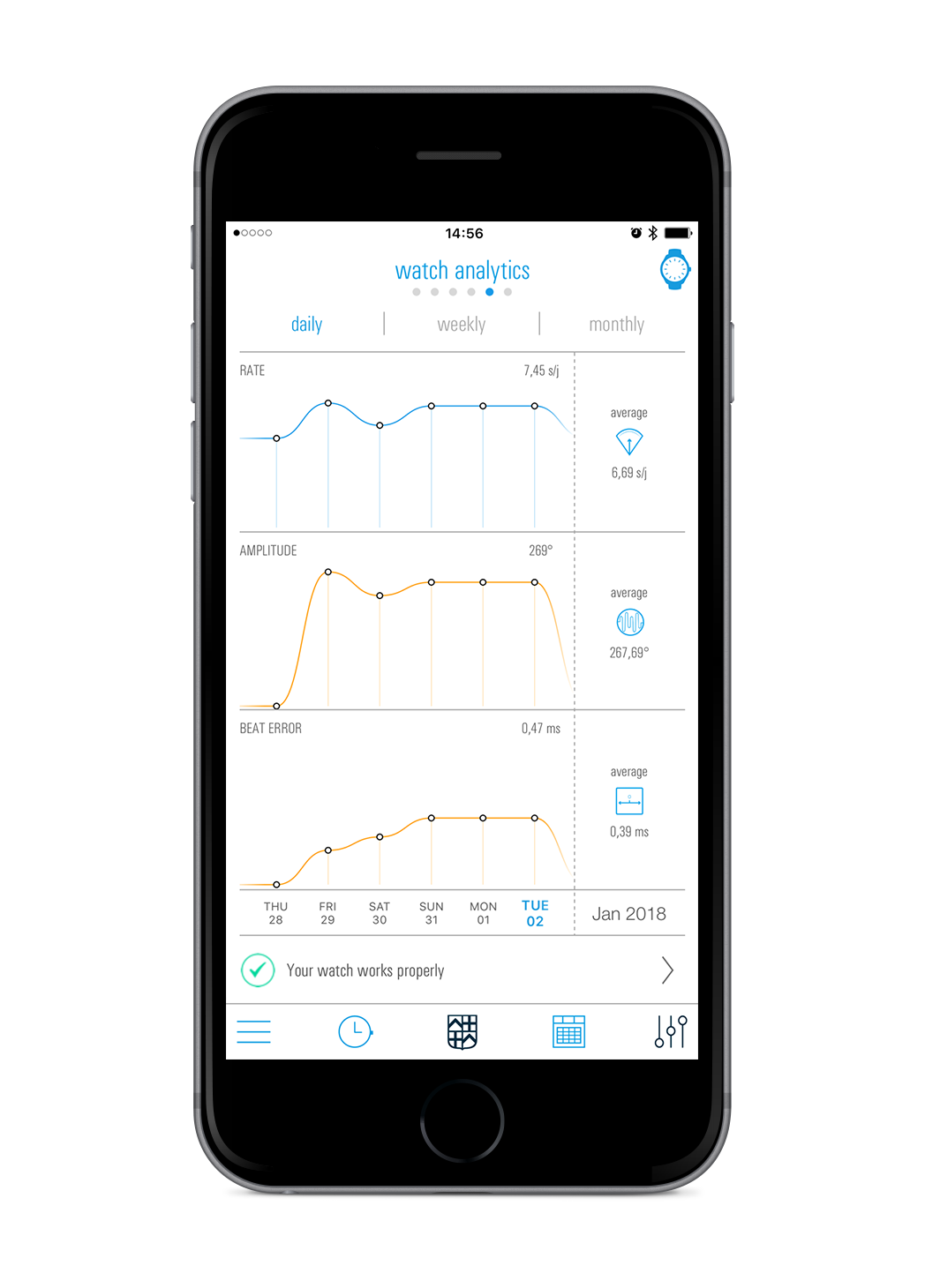
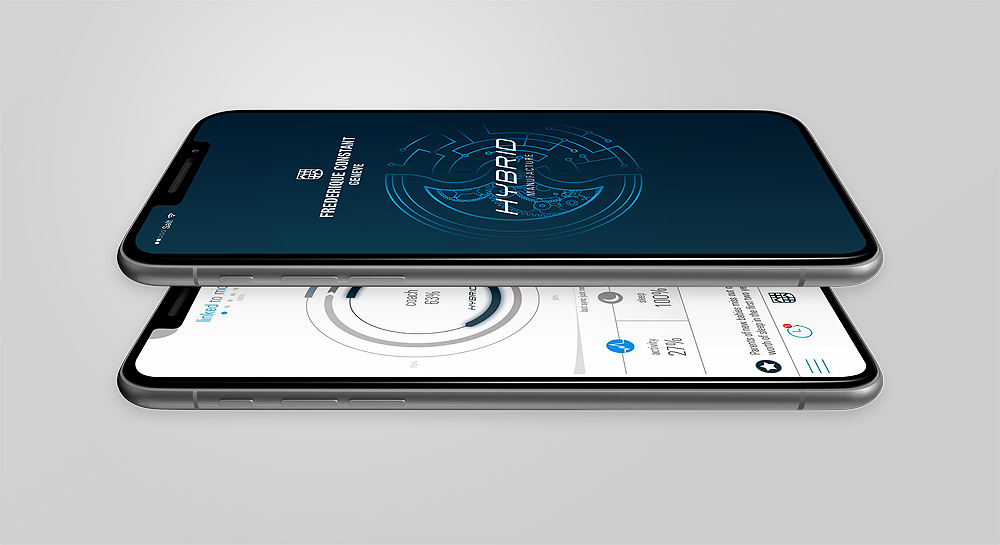
Frederique Constant’s Hybrid Manufacture Caliber FC-750, which the company says is developed, produced, and assembled entirely in-house, is at its base level an automatic-winding caliber with a 28,800-vph frequency, 33 jewels, and a 42-hour power reserve, with traditional haute horlogerie decorations including perlage and côtes de Genève. The watch’s main timekeeping functions — central hours, minutes, and seconds, and date indication at 6 o’clock — are driven entirely by the mechanical components, and set by the crown at 3 o’clock. The electronic parts of the movement control the array of smartwatch functions, via Bluetooth, through a pusher on the left side of the case. As with previous iterations of the Horological Smartwatch, these functions’ readouts are visible both in analog form on the watch’s 12 o’clock subdial, and in digital form on the Hybrid app. The challenge, according to the brand, of creating such a movement was in avoiding the negative effects of magnetic fields of the electronic parts and the mechanical ones — one that Frederique Constant’s watchmakers and designers successfully met by designing a patented antimagnetic shield case around the minuscule electronic gearbox.
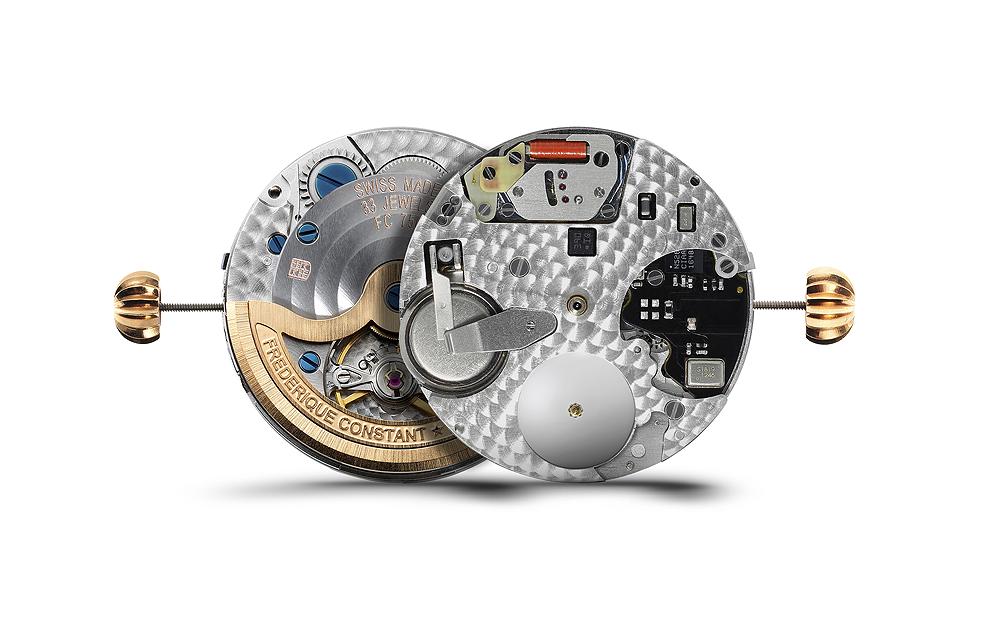
The dial of the Hybrid models, protected beneath a convex sapphire crystal, has a bicompax arrangement, with the date, displayed by a pointer on a 1-31 scale, on the subdial at 6 o’clock, and the smartwatch functions represented in analog form on the subdial at 12 o’clock. These functions include activity tracking, defined by steps taken per day; sleep monitoring, which compares the wearer’s sleep hours objective with actual hours slept; a world-time display, to keep track of times in other time zones; and a “dynamic coach,” which digitally prompts the wearer to set and achieve fitness goals. In addition, the Hybrid features the aforementioned Caliber Analytics, which automatically analyzes, once per day at 4:00 AM, the health of the mechanical movement
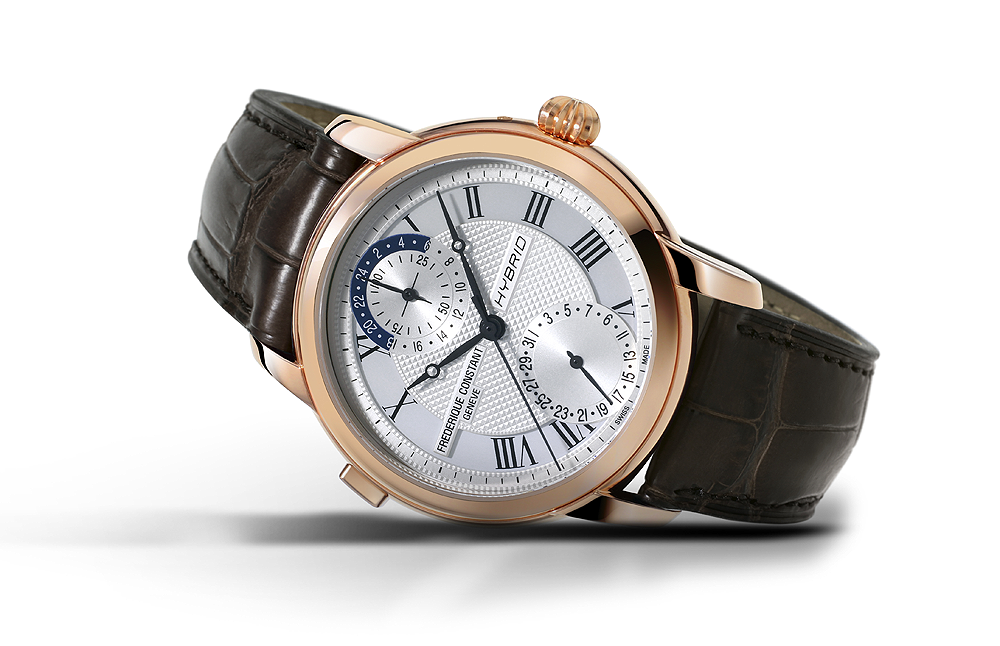
The watch is delivered in a wooden winder box that has a removable charger for the smartwatch functions (which have a seven-day battery life) and a traditional rotator to wind the movement’s mainspring. For a traveler unwilling to lug around the box, the charger can be removed and connected to a standard USB cable to charge the watch.
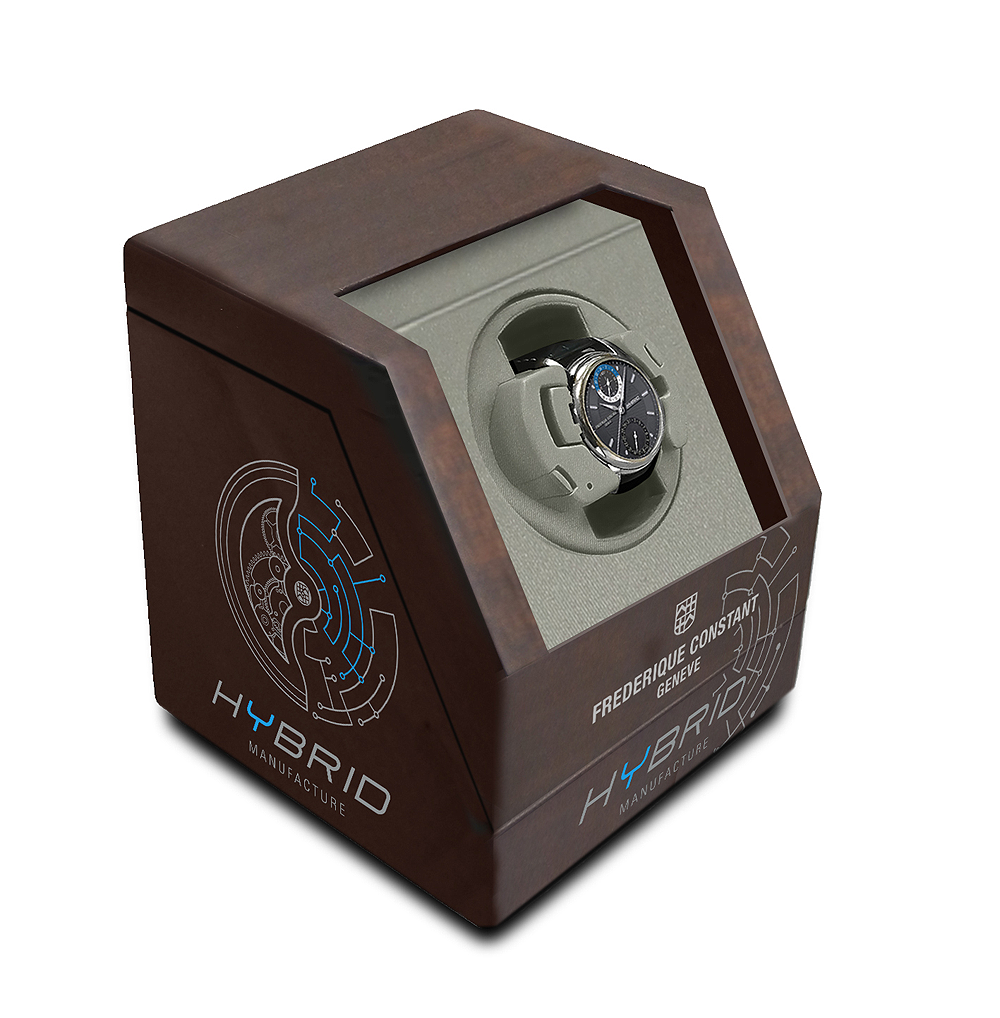
The Frederique Constant Hybrid manufacture is offered in four versions. Two have polished stainless steel cases, one with a silver-colored guilloché dial with black-printed Roman-numeral indices and hand-polished black hands, the other with a navy blue guilloché dial with black indices and hand-polished white hands. The third has a rose-gold plated case with a silvered guilloché dial, black indices, and black hands. A fourth, limited to 888 pieces, features a dark gray guilloché dial with silver applied indices and luminous-coated silver hands. All are fitted with sapphire exhibition casebacks to show off the groundbreaking hybrid movement. Prices range from $3,495 to $3,795.
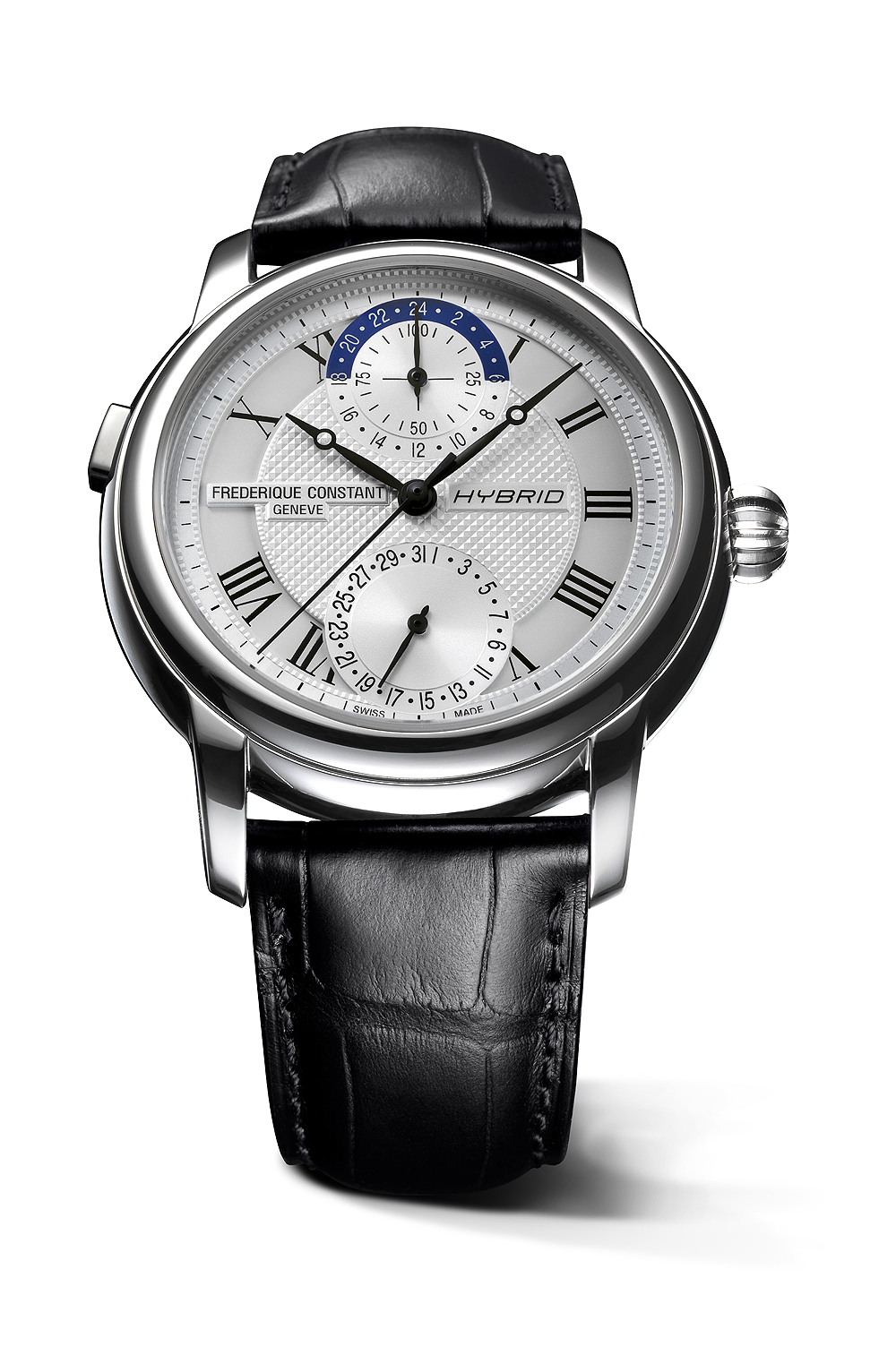





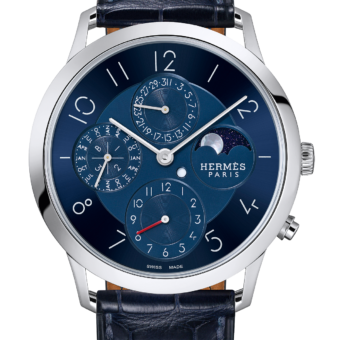


Dear Mark, thank you for your thorough and enlightening review. I have a couple of questions though. Does the date pointer belong to the electronic or to the mechanical part of the watch? Judging from the previous model of F.C. the correct answer is the first one, but a true mechanical watch would at least include a date in the mechanical part. Plus, what is the purpose of monitoring the mechanical performance if there no way to correct it? Best regards, Miltos